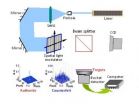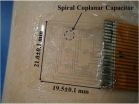(Press-News.org) WASHINGTON, DC, June 24, 2014 — As the United States grows more diverse than ever, organizations from Fortune 500 companies to political parties are scrambling to keep pace. But in doing so, they face the challenge of uniting people from very different backgrounds in a single purpose.
A new study led by a University of Connecticut sociologist suggests that if they want to succeed, they could learn a lot from how an unlikely practice — prayer — is used in one set of diverse organizations.
Specifically, the study finds that interfaith group prayer serves as a "bridging cultural practice" in the kinds of multi-faith community organizations examined by UConn sociology professor Ruth Braunstein and her fellow sociologists, Richard L. Wood from the University of New Mexico and Brad R. Fulton from Duke University.
"The prayer practices we observed appear to play a crucial role in binding participants together across significant racial and socioeconomic differences," Braunstein said. "They do this by being inclusive of multiple faith traditions, celebrating the diversity of the group, and encouraging individuals to interact with each other."
The study, published online this month and scheduled to appear in the August print edition of the American Sociological Review, consists of data from a national study of multi-faith community organizing groups, and extended fieldwork within one such group by Braunstein. These groups organize primarily through religious congregations in an effort to build civic coalitions that address a variety of issues, from health care access to crime.
Such groups tend to be both racially and socioeconomically diverse. Nationally, more than 50 percent of board members of these organizations are non-white, compared to 19 percent of all nonprofit board members and 13 percent of Fortune 500 board members. Additionally, more than half the board members of the faith-based groups earn less than $50,000 a year.
What Braunstein and her fellow researchers discovered is that, far from being a source of division, religious practices play a unifying role in such groups, even in those — like the one where Braunstein did her fieldwork — that include members from Christian, Jewish, and Muslim faith traditions.
Interfaith group prayers took place in about 75 percent of the diverse gatherings Braunstein observed over two years. Such prayers are defined by the authors of the study as a "bridging cultural practice," meaning an activity that's used to build shared identities across differences.
By analyzing data from the National Study of Faith-Based Community Organizing Coalitions, the researchers found that the greater a group's diversity, the more likely they were to incorporate "bridging prayer practices" like prayer vigils into their regular activities.
"American society can learn a lot from organizations that are struggling honestly to embrace diversity — especially as we become a majority-minority society in the coming decades, with high levels of income inequality," said Wood.
Obviously, group prayer is not going to work for every organization. The authors note that conservative religious groups uncomfortable with interfaith prayer, as well as secular organizations, are unlikely to embrace the types of practices observed in the study.
However, the kinds of "bridging" practices identified by Braunstein and her fellow researchers don't have to be faith-based to be valuable. The researchers suggest that sharing meals, playing sports, or reading literature together could be similarly valuable to different types of organizations seeking to realize the benefits of member diversity.
"Organizations tend to be more effective when they engage, rather than avoid, the varied backgrounds represented among their members," Fulton said.
The key seems to be organizational flexibility and a willingness to embrace activities that emphasize shared identities through meaningful collective practices, according to Braunstein.
"We aren't talking about superficial team-building exercises," she said. "These are practices that are central to groups' cultures, and emerge over time as participants reflect on the qualities that unite everyone in the group and develop shared rituals that are meaningful to everyone."
INFORMATION:
Primary funding for the national study was provided by Interfaith Funders, along with secondary grants from the Hearst Foundation, the Society for the Scientific Study of Religion, the Religious Research Association, the Louisville Institute, and Duke University.
About the American Sociological Association and the American Sociological Review
The American Sociological Association, founded in 1905, is a non-profit membership association dedicated to serving sociologists in their work, advancing sociology as a science and profession, and promoting the contributions to and use of sociology by society. The American Sociological Review is the ASA's flagship journal.
The research article described above is available by request for members of the media. For a copy of the full study, contact Daniel Fowler, ASA Media Relations Manager, at (202) 527-7885 or pubinfo@asanet.org.
For more information about the study, members of the media can also contact Tom Breen, University of Connecticut, at (860) 486-0890 or tom.breen@uconn.edu.
Study suggests prayer can build unity in diverse organizations
2014-06-24
ELSE PRESS RELEASES FROM THIS DATE:
UF part of research team that finds equine influenza virus in camels
2014-06-24
GAINESVILLE, Fla. --- University of Florida researchers have found evidence that an influenza A virus can jump from horses to camels – and humans could be next.
The One Health Center of Excellence for Research and Training in UF's Emerging Pathogens Institute, in collaboration with U.S. and Mongolian institutions, has identified the first known case of an equine influenza virus in camels. Their findings will be published in the December issue of Emerging Infectious Diseases, but an ahead of print version of the report is available here:
http://wwwnc.cdc.gov/eid/article/20/12/14-0435_article
"Over ...
Prior drug use is the greatest predictor of ecstasy use US high school seniors
2014-06-24
Ecstasy, also known by its chemical abbreviation MDMA, is an illicit drug that is commonly taken at nightclubs and dance parties. Ecstasy's street names include: "Molly" (U.S.), "Mandy" (U.K.), "E," and "X." Although not limited to nightlife scenes, ecstasy is popular at dance parties, as it tends to enhance the party experience (e.g., perceptions of lights and music, nightlife socialization).
A study just published in the journal Substance Use & Misuse by researchers affiliated with New York University's Center for Drug Use and HIV Research (CDUHR), examined a national ...
New study uses blizzard to measure wind turbine airflow
2014-06-24
A first-of-its-kind study by researchers at the University of Minnesota (UMN) using snow during a Minnesota blizzard is giving researchers new insight into the airflow around large wind turbines. This research is essential to improving wind energy efficiency, especially in wind farms where airflows from many large wind turbines interact with each other.
The study by researchers at the UMN College of Science and Engineering's St. Anthony Falls Lab was published today in Nature Communications, a major scientific journal.
Wind energy is one of the fastest-growing renewable ...
Consumers looking for reduced sugar and salt in food products more than low- and no-fat
2014-06-24
More than 50 percent of consumers are interested in products with reduced levels of salt and sugar, and yet new products in the United States are more likely to tout low- or no-fat attributes, according to a June 23 panel discussion at the 2014 Institute of Food Technologists (IFT) Annual Meeting & Food Expo® in New Orleans.
In recent research, just 25 percent of consumers claimed to be dieting, yet more than 70 percent said they want to lose weight.
"Consumers know they need to take care of their health," said Lynn Dornblaser, director, innovation & insight, Mintel ...
From deep sea to deep space
2014-06-24
How do you feed a six-person crew on a three-year mission to Mars?
Food scientists are working on this and other challenges related to creating and optimizing food for astronauts, soldiers, pilots and other individuals working and living in extreme environments, according to a June 23 panel discussion at the 2014 Institute of Food Technologists (IFT) Annual Meeting & Food Expo® in New Orleans.
The constraints often are similar whether the food is created for the desert, mountains, deep sea or space – it needs to be nutritious, palatable, light-weight, easy to store ...
Energy drinks raise new questions about caffeine's safety
2014-06-24
Caffeine, which was extensively researched for possible links to birth defects in animals and cardiovascular disease in humans over 30 years ago and then exonerated, has become the focus of renewed concerns as caffeine-containing energy drinks have surged in popularity. However, according to a June 23rd panel discussion at the 2014 Institute of Food Technologists (IFT) Annual Meeting & Food Expo® in New Orleans, a rich database of health evidence exists confirming the safety of caffeine for consumers at current levels of exposure. What isn't known, however, is how caffeine ...
Ghost writing the whip
2014-06-24
WASHINGTON D.C., June 24, 2014 – "Ghost imaging" sounds like the spooky stuff of frivolous fiction, but it's an established technique for reconstructing hi-res images of objects partly obscured by clouds or smoke. Now a group of researchers at the National University of Singapore (NUS) is applying the same idea in reverse to securing stored or shared electronic data.
Described in the journal Applied Physics Letters, from AIP Publishing, the work establishes "marked ghost imaging" technology as a new type of multi-layer verification protocol for data storage or transmission.
By ...
Researchers mapping your route from illness to illness
2014-06-24
This is the first time that researchers have analysed big data relating to an entire country's disease development. The new ground-breaking results are based on data from 6.2 million Danes who were followed for 14.9 years – using state-of-the-art systems biology, researchers have boiled down the massive amount of data to 1,171 so-called thoroughfares with central information on the course of diabetes, chronic obstructive pulmonary disease, cancer, arthritis and cardiovascular disease. The researchers are, in other words, able to forecast whether you are driving on a risky ...
New technology: The goose bump sensor
2014-06-24
WASHINGTON D.C., June 24, 2014 – Can emotional states be measured quantitatively, and if so what would advertising, manufacturing and social media companies do with that data? Imagine a world in which a consumer's real-time physical and emotional response helped to determine his/her experience of music, online ads or the temperature in the room.
That may not be so far away -- a team of researchers at KAIST in Daejeon, South Korea has developed a flexible, wearable 20mm x 20mm polymer sensor that can directly measure the degree and occurrence on the skin of goose bumps ...
Roux-en-Y gastric bypass surgery may reduce heart disease risk
2014-06-24
CHICAGO, IL—Obese patients with Type 2 diabetes who don't have excessive surgical risk may find that Roux-en-Y gastric bypass (RYGB) surgery can help them reduce their risk of heart disease, a new clinical trial shows. The results were presented Tuesday at ICE/ENDO 2014, the joint meeting of the International Society of Endocrinology and the Endocrine Society in Chicago.
"There is emerging evidence highlighting the potential health benefits of bariatric surgery in managing obese patients with Type 2 diabetes. In the past, lifestyle advice and medications provided the ...

